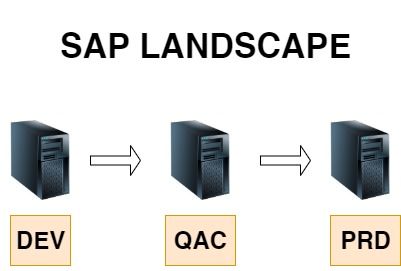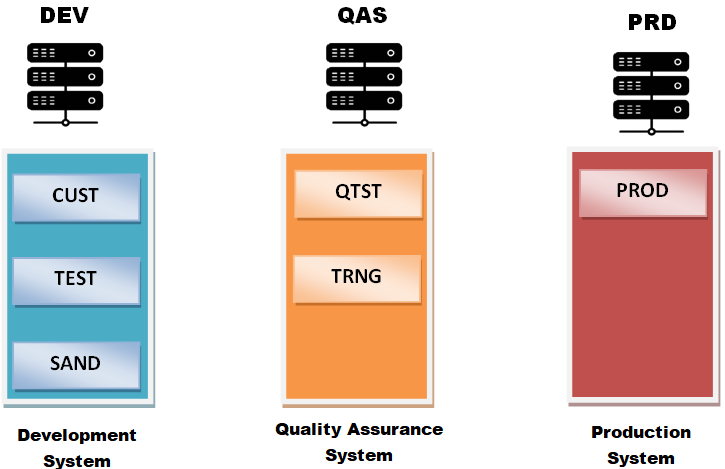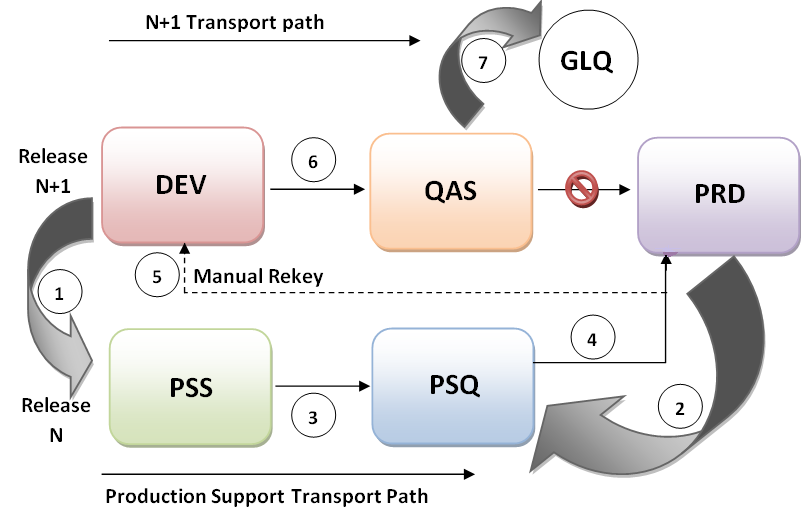SAP is an enterprise resource planning software that provides multiple business functions with a single view of the truth. The system has centralized server management called SAP system landscape.
It is a collection of servers (development, quality & production) connected to various transport routes to the central system. This landscape varies from enterprise to enterprise.
This article will discuss the SAP landscape and how it helps organizations and business companies to manage different servers.
What is the SAP system landscape?
The SAP system landscape is a logical group of servers or a layout arranging different servers like development, quality assurance, and production server.
The SAP landscape differs from SAP architecture as the organization can modify or update SAP architecture based on their requirements, but they cannot change the SAP landscape. The SAP system landscape is an outcome of various levels of SAP implementation.

It is also known as the architecture of servers. These servers are as follows:
Development server:
This server is responsible for all the development-based activities where organizations develop new customizations based on the requirements. It is also known as a sandbox client.
It helps business companies undergo trial and error for exploring their business ideas without any real-time consequences. Using the development server, business consultants or the management team do new customization and write new programs per the requirements.
It includes three clients, Sandbox, Development-testing, and Customizing clients.
Sandbox client:
A sandbox client is a part of the SAP landscape development section. It is a playground for business management teams to test their system design before real-time outcomes.
Customizing client:
Customizing clients defines the technical structure of the SAP landscape system. It is the server of the SAP landscape where business management teams perform tests on the newly developed customizations.
Once the configuration gets completed, management teams can recreate this configuration in the configuration client.
Development testing:
It is responsible for undergoing unit testing, and often business companies can use this client for the integration testing phase.
Quality Assurance Server:
In this phase, the team members test the customization or programs. It has two separate sections, namely the testing server and the training server, and allows corporation teams to accomplish all cross-functional testing in the box. SAP landscape has 300 Quality Assurance Servers.
Production server:
It is also known as the golden client, another SAP landscape client where data reaches after all the integrations, customizations, and filtration. The production server is the main server that maintains documents of all the live data of the business companies once the project goes live.
SAP landscape has seven hundred pre-production clients and eight hundred production clients.
Why do companies use the SAP system landscape?
While dealing with concurrent business activities, management teams use systems or layouts which handle all the servers linking them to the central system. Customers who install SAP landscape can get the following benefits:
- Investment protection: Business management teams can integrate complex traditional SAP landscapes on infrastructure ready for SAP HANA.
- Agility: Customers using the modern SAP landscape management experience benefits of automated provisioning capabilities for SAP applications that condense the time-to-value.
- Engineering: Customers can integrate the system capabilities, namely computing, networking, and storage, with the specified prerequisites and dependencies. These are first-rate tested solutions for SAP users to deliver a seamless experience.
- Optimization: Using the SAP landscape, customers can experience efficient design and deployment principles highlighting demonstrated implementation, automation, and resiliency best procedures for SAP landscapes.
Types of SAP system landscape:
One-system landscape:
The one-system landscape is an arrangement of servers containing all the central clients in a single SAP system. Once customers use it productively, they can only develop within the system once they stop the production process for the development and testing phases. Thus, experts recommend something other than SAP's one-system landscape in business management.
Two-system landscape:
It is a development environment where customers can execute smaller SAP implementations. It contains QAS in the development system as a single unit and does not have a separate quality assurance system or QAS. One of the disadvantages of the SAP two-system landscape is that customers can use the cross-client data in both the customizing and quality assurance system. It indicates that if customers make any changes to the cross-client data in the customizing client can impact the tests in the quality assurance phase since these are interdependent.
Three-system landscape:
It is one of the practical systems that include separate SAP systems for each central client. The three-system landscape consists of a development system (DEV), a quality assurance system (QAS), and a production system (PRD). This system allows additional clients to accomplish subsidiary activities with one of the three clients in this three-system landscape.

Five-system landscape:
Anything above the three-system landscape is called the N or N+1 SAP landscape. We can term the five-system landscape as the N+1 architecture with "N" as the current release in the production system and "N+1" referring to new release development. Thus, this process helps the SAP team to design and test primary projects in distinct landscapes without interrupting the business.

Conclusion:
SAP landscape gives businesses an overview of the deployment of the servers. Deciding which client or type of system landscape businesses needs depends on the transport routes. Every company follows its own SAP landscape with the standard approach.